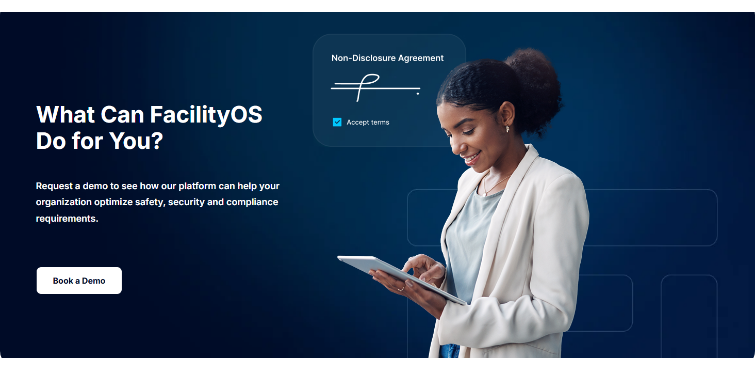Key Limitations of Manual Approaches
Understanding what digital systems offer also puts the limitations of manual systems into perspective.
Susceptible to Human Error
Human error significantly impacts manual data collection accuracy. It’s easy to miss important details, mis-record times, or lose handwritten notes, all of which impact accuracy and consistency.
Even the best-intentioned teams can struggle to document everything in the moment, especially during high-stress drills or across large spaces.
Hard to Scale and Standardize
Larger facilities or multi-building campuses often face added complexity. Manual coordination across zones is difficult and time-consuming, making it harder to:
- Keep drills synchronized
- Ensure consistency from one drill to the next
- Scheduling drills in advance with consistent reminders
- Combine data from different teams or locations into a single, useful report
A lack of standardization can slow down improvements and make it harder to measure progress over time.
Limited Opportunities for Improvement
Manual systems typically record what happened, but not much else. Without digital tools to capture and organize data, it’s difficult to identify trends or pinpoint the root causes of delays or errors. This keeps organizations stuck in a reactive cycle, where drills are completed for compliance but offer little strategic value.
Recognizing these limitations is the first step toward improving your strategy. The next is understanding what to look for in a digital emergency management solution that can evolve with your organization’s needs.
What to Prioritize in a Digital Solution
The right digital solution should directly solve the common pain points of manual emergency drills. Look for features that simplify coordination, ensure accuracy, and support long-term readiness.
| Intuitive, Mobile-Ready Interface: A solution should be easy to use, especially in high-pressure situations. Mobile access is essential, allowing coordinators and participants to engage from anywhere on-site. | |
| Real-Time Dashboards and Visibility: Accurate, timely information is situational awareness during a drill. A solution should clearly indicate who has checked in, who remains unaccounted for, and where specific actions are needed. | |
| Automated Documentation and Compliance Reporting: A strong digital solution eliminates the burden of manual recordkeeping. It should automatically generate complete, time-stamped records of drill activities, ensure audit readiness, and facilitate internal reviews. | |
| Scalability Across Facilities: Your solution should be able to accommodate the scale and personnel of your operations, whether you are managing a single site or a multi-building campus. | |
|
Integrated Scheduling and Planning: Look for a system that enables pre-scheduling of drills, with built-in reminders and documentation. Advanced scheduling helps keep teams aligned and ensures each drill is properly recorded for future review and compliance tracking. For example, FacilityOS’s emergency management solution, EmergencyOS, enables automated calendar invitations and email reminders to help keep teams aligned. Additionally, for accurate record keeping and compliance tracking, each scheduled drill is recorded and stored. |
Manual vs Digital Comparison
When compared side by side, a digital solution offers far greater assurance that your drills and response are aligned with the level of preparedness your facility requires.
Making the Strategic Choice for Your Organization
The decision between manual and digital emergency drill approaches ultimately depends on organizational priorities, compliance requirements, and commitment to comprehensive preparedness. However, several factors strongly favor digital solutions for most facilities.
Organizations with complex facilities, strict regulatory requirements, or high-risk operations benefit significantly from digital systems' analytical capabilities and comprehensive documentation features. Investment in digital emergency management systems typically provides returns through improved compliance, reduced risk exposure, reduced downtime, and enhanced emergency response capabilities.
Safety coordinators should evaluate their current manual processes against the analytical and coordination capabilities that digital solutions provide. The question becomes not whether digital solutions offer advantages, but whether organizations can afford to maintain preparedness gaps that manual systems cannot address.
Real-World Example: Ingersoll Rand’s Rapid Tornado Response
At Ingersoll Rand’s Ocala plant, the value of a digital emergency system became clear when a tornado alert struck shortly after implementation. With limited time to act, the safety team used their newly implemented EmergencyOS system to send clear, coordinated instructions via text and email to all employees and visitors in seconds.
What had once been a fragmented, manual process was now fast, consistent, and far-reaching. Staff received timely updates, knew exactly what to do, and felt more confident in the company’s preparedness, all in the face of a potentially life-threatening event.
Comfort Does Not Equal Readiness
Many organizations rely on manual methods because they feel comfortable and familiar with them. But comfort does not equal readiness.
How you execute drills reflects your organization’s ability to respond to an emergency. Outdated manual processes introduce unnecessary risks, inefficiencies, and inconsistencies that compromise both safety and compliance.
Modernizing your approach with a digital solution enables you to improve accountability, reduce administrative burden, and ensure that your drills prepare your team for a real crisis. Now is the time to assess whether your current methods support the level of preparedness your facility, and your people, deserve.
Building a Future-Ready Emergency Preparedness Program
Emergency preparedness has evolved beyond periodic drills to encompass comprehensive risk management that protects lives, ensures regulatory compliance, and maintains operational continuity. Digital solutions like EmergencyOS provide analytical depth, coordination capabilities, and compliance documentation that modern safety challenges demand.
The transition from manual to digital emergency management represents an investment in organizational resilience that extends far beyond drill documentation. By choosing comprehensive digital solutions, safety coordinators position their organizations to respond effectively to actual emergencies while maintaining the ongoing preparedness that protects both people and operations.
Consider evaluating your current emergency drill processes against the capabilities that digital systems provide. The difference may determine how effectively your organization responds when preparedness matters most.
Stay updated with industry insights, success stories, and more by following us on social media for the latest FacilityOS content.
Stay updated with industry insights, success stories, and more by following us on social media for the latest FacilityOS content.




 Follow us on Facebook
Follow us on Facebook  Follow us on X
Follow us on X
 Follow us on LinkedIn
Follow us on LinkedIn